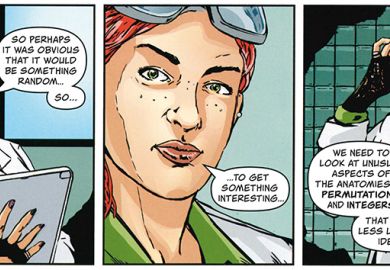Sir Ian Blatchford, director of London’s Science Museum, is himself an art historian, and at a recent press conference he spoke of art’s role as “a critical friend of science and engineering”. He was there to launch the Science Museum’s exhibition The Art of Innovation: From Enlightenment to Dark Matter, the book of the same name he and Tilly Blyth (head of collections and principal curator) have written for Bantam Press and the accompanying 20-part series on BBC Radio 4. The result represents a triumph for collaboration across media and institutions, but also a hymn to the value of interdisciplinarity – something that all universities claim to believe in but often find hard to embrace.
Take the railway boom in 19th-century Britain. The Art of Innovation in its various incarnations brings together Joseph Clement’s model of the Firefly locomotive, J. M. W. Turner’s celebrated painting Rain, Steam and Speed (1844), maps showing the steadily expanding railway networks and a satirical print of a monstrous train disrupting a quiet picnic. All clearly illuminate each other, but it must be a rare university engineering course that includes art history or Victorian social history, and a rare degree in art history that features much engineering.
Every chapter in Blatchford and Blyth’s book contains similarly intriguing juxtapositions. One explores how early work on pneumatic chemistry “became an expression of, and metaphor for, the dangers of all kinds of experiment, whether political or chemical”. Since Joseph Priestley was “a vocal supporter of the political freedom promised (in its early days) by the French Revolution”, he and his colleagues’ experiments on nitrous oxide were reported by conservative commentators as “symptomatic of a science prone to ‘enthusiasm’” – used in a pejorative sense associated with both “dissenting religion” and “political rebellion”. More crudely, in 1802 James Gilroy produced a satirical drawing of a lecturer demonstrating the results of his latest research that amounts to an elaborate fart joke.
In more recent times, art has often addressed both the wonder and the anxieties provoked by the latest science. Blatchford and Blyth explore the celebrated dystopian BBC television series Edge of Darkness (1985) in the light of fears about the possibility of nuclear war and the hints of hope represented by James Lovelock’s Gaia hypothesis about “the Earth as a self-regulating system”. The book ends with Cornelia Parker’s powerful 1991 installation Cold Dark Matter: An Exploded View, where she blew up and then reassembled an ordinary garden shed in response to some of the stranger recesses of contemporary physics. Parker herself is not only fascinated by science but sees “a link between the accidental art the sciences produce and the deliberate art the artist creates”. The book, the exhibition and the radio series all make a powerful case for the pleasure and stimulation to be derived from breaking down the barriers between “the two cultures” and thereby issue to universities something of a challenge.
POSTSCRIPT:
Print headline: Miscellanea and Marginalia: How arts and sciences shed light on each other
Register to continue
Why register?
- Registration is free and only takes a moment
- Once registered, you can read 3 articles a month
- Sign up for our newsletter
Subscribe
Or subscribe for unlimited access to:
- Unlimited access to news, views, insights & reviews
- Digital editions
- Digital access to THE’s university and college rankings analysis
Already registered or a current subscriber?



